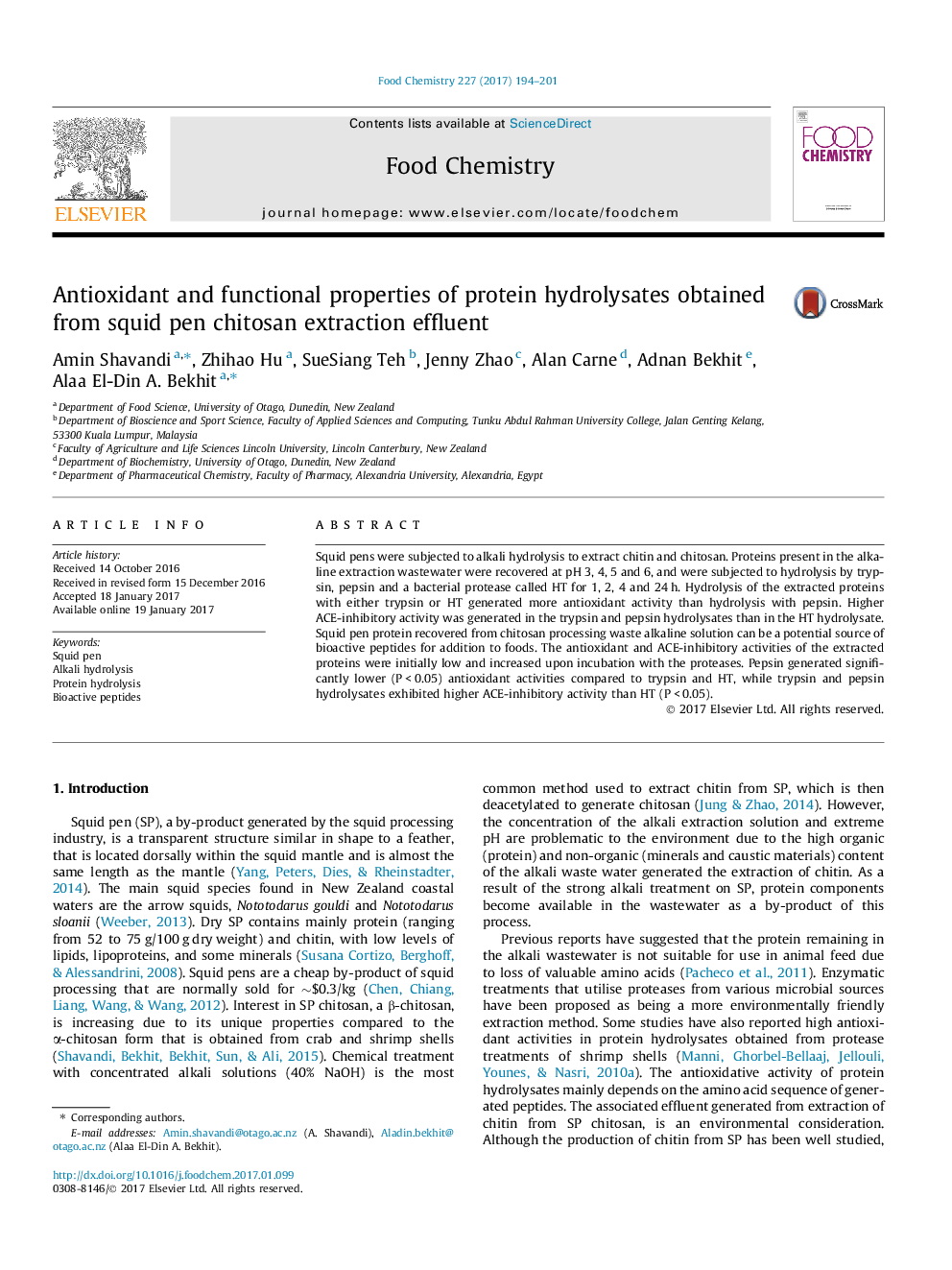| Article ID | Journal | Published Year | Pages | File Type |
|---|---|---|---|---|
| 5133287 | Food Chemistry | 2017 | 8 Pages |
â¢Squid pen protein from wastewater was hydrolysed by trypsin, pepsin and a bacterial protease called HT.â¢Trypsin and HT hydrolysates generated more antioxidant activity than pepsin hydrolysates.â¢High ACE-inhibitory activity was generated in the trypsin and pepsin hydrolysates.â¢Protein recovered from chitosan processing waste solution can be a potential source of biopeptides.
Squid pens were subjected to alkali hydrolysis to extract chitin and chitosan. Proteins present in the alkaline extraction wastewater were recovered at pH 3, 4, 5 and 6, and were subjected to hydrolysis by trypsin, pepsin and a bacterial protease called HT for 1, 2, 4 and 24Â h. Hydrolysis of the extracted proteins with either trypsin or HT generated more antioxidant activity than hydrolysis with pepsin. Higher ACE-inhibitory activity was generated in the trypsin and pepsin hydrolysates than in the HT hydrolysate. Squid pen protein recovered from chitosan processing waste alkaline solution can be a potential source of bioactive peptides for addition to foods. The antioxidant and ACE-inhibitory activities of the extracted proteins were initially low and increased upon incubation with the proteases. Pepsin generated significantly lower (PÂ <Â 0.05) antioxidant activities compared to trypsin and HT, while trypsin and pepsin hydrolysates exhibited higher ACE-inhibitory activity than HT (PÂ <Â 0.05).
